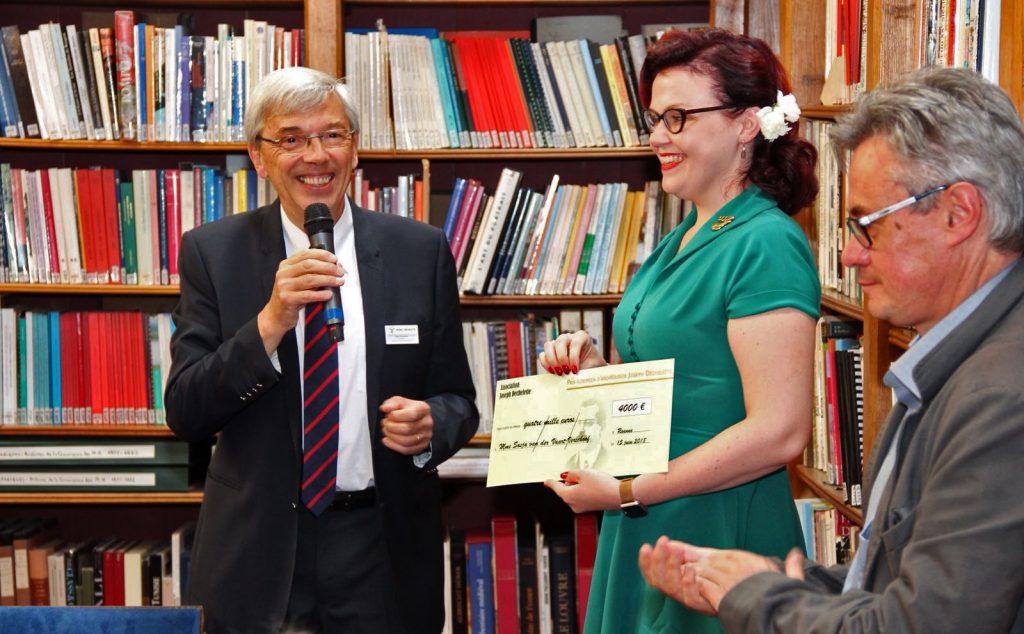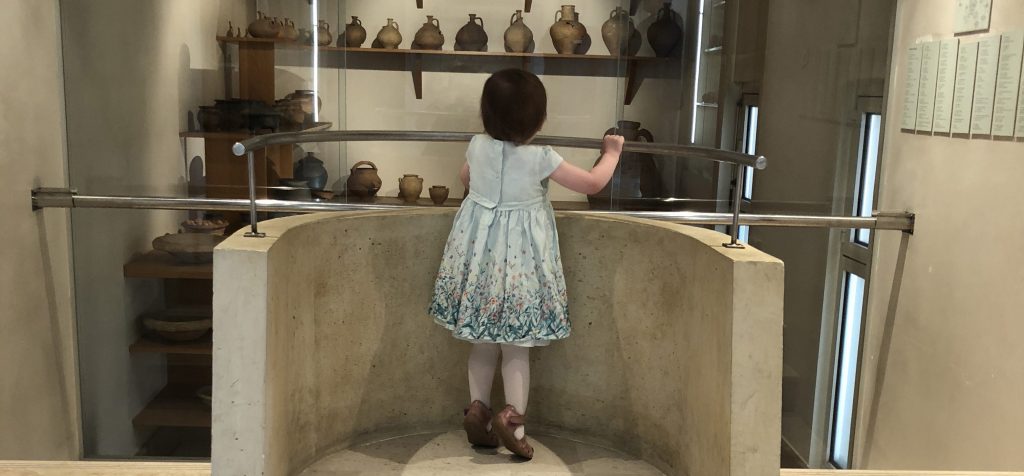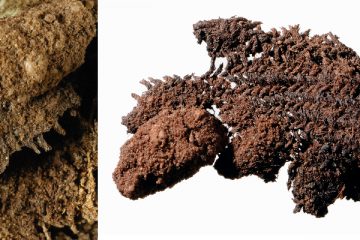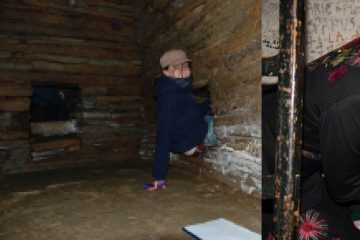I am honored and proud to say that on Friday 15-06-2018 I was awarded the Joseph Déchelette European Archeology Prize for my dissertation Fragmenting the Chieftain. This relatively new prize, named after internationally renowned scholar Joseph Déchelette (1862-1914) – one of the founders of protohistoric archeology in Europe – was recently established to promote the PhD research of a young archeologist. This year that young archeologist turned out to be me! 😀

I could not be more excited and grateful for the opportunities this provides. Not only does the prize include substantial prize money (€10,000) that I intend to put towards future research, it also includes various research residencies at prestigious institutions (such as the Romano-Germanic Central Museum in Mainz (RGZM), Bibracte, the library of the Musée des beaux-arts et d’archéologie Joseph Décheletteand the Laténium in Switzerland) as well as the opportunity to organize a round table at the French National Museum of Archeology (MAN). As such, it truly is a wonderful opportunity for a young scholar, one that I am thrilled to now have available to me.

First awarded in 2016 to Eneko Hiriart, this prestigious prize will be awarded biannually by the Association Joseph Déchelette, the RGZM and the French Ministry of Culture and Communication to a young scholar who wrote his or her dissertation on protohistory in Europe. The Joseph Déchelette association was founded in 2010 by the famous archeologist’s great-nephew, Édouard Déchelette(†), who wished to keep the memory of this scholar alive and promote the archeological discipline. The prize is open to the wider European archeological community and is awarded following an open call for applications, requiring an abstract of the thesis, research perspectives for the year following the award of the prize and an article published or accepted (and of course a curriculum vitae including a list of their publications). If you are working to obtain your PhD on a subject that makes you eligible for this prize I highly recommend you apply in two years, as it really comes with some wonderful opportunities not generally available to young doctors!
To France!
The award ceremony was to take place in the library of the Musée des beaux-arts et d’archéologie Joseph Déchelette in Roanne– so south we traveled! The Husband and Kid accompanied me on the long train trip, and my parents met us there. I am grateful to all the hosts and organizing parties for making me and my family welcome – not everyone would be willing to cater to a 2-year old on such an occasion! It is always lovely when you get to be a scholar and a human being. We arrived in Bibracte on Thursday evening, where we met up with Vincent Guichard – the director-general of the Bibracte oppidum (see below) – for a lovely French dinner (read: delicious food and plenty of good wine).
To Roanne for the award ceremony
The next day Vincent took the Husband and me on a lovely drive through the countryside to Roanne, stopping at several truly stunning Romanesque churches (10–12th centuries AD). While I am of course a prehistorian at heart, even I was amazed by the fantastic medieval carvings that grace these buildings. I also quite enjoyed the various French utterances of amazement at the medieval carvings (as well as some muttered French cursing about later cleaning/restoration works) of one of the committee members whom we had picked up at the train station ;-).

We arrived in Roanne – where the ceremony was to take place that afternoon – for lunch with part of the award committee, including Gilles Déchelette (the current president of the eponymous association). Following this, we all went to the Musée des Beaux-Arts et D’archéologie Joseph Déchelette. This rather extraordinary institution is housed in L’hôtel de Valence de Minardière, which Joseph Déchelette purchased in 1892, and which houses among other things artifacts from his personal collection as well as his extensive library. Déchelette himself died in battle during WWI, and his widow bequeathed the museum to the town of Roanne. Initially, Déchelette’s widow lived on the second floor, while the museum occupied the ground floor (can you imagine, literally living above an archeology museum?!). Upon her death, the museum was extended over the entire mansion in 1957. An exceptional result of the ‘origin story’ of this museum is the fact that Déchelette’s office has been preserved, pretty much exactly as it was when he died. While a computer has been added to his desk, his letter stamps and stationery are exactly where they have always been – on his desk for over a century. You can even sit in his chair! Prior to his death, Déchelette pretty much collected every archeological book written at the time, and we were shown some of the more exceptional volumes in the collection. Man, did they know how to illustrate a book! Not only did I finally get to hold a real copy of Déchelette’s Manuel d’archéologie préhistorique, celtique et gallo-romaine, a truly pioneering volume, but we also were shown all his notes from when he was preparing this series of books. His actual, hand-written and illustrated notes! As a prehistorian, this was unbelievably exciting for me (yes, I am a true #archeonerd).

The ceremony itself involved the various committee members discussing my work and why I had been selected as laureate. It was a close one this year, with two other scholars (also women – girl power!) receiving honorable mentions. While Gadea Cabanillas de la Torre (University of Paris 1 Panthéon-Sorbonne/ Universidad Autónoma de Madrid) could not attend as she was about to give birth, Joëlle Rolland (University Paris 1 Panthéon-Sorbonne) was in attendance and truly lovely to meet. She wrote her dissertation on later Iron Age glass bracelets, and I am looking forward to reading it. She had brought some of the replicas she has made so far, and has promised to make me one in the right size – more #archeobling, yay!
The ceremony was mostly in French, and I was glad to have Vincent sit next to me to help me understand what was being said (I can sort of understand French if it is spoken slowly, but in my experience no Frenchman ever speaks slowly). Gilles Déchelette presented me with a certificate, check and a GORGEOUS CUSTOM MEDAL, and both François Fichet de Clairfontaine (representing the Ministry of Culture and Communication) and Martin Schönfelder of the RGZM each presented me with a check for their part of the prize money. I was also given several lovely books as well as a necklace with a small reproduction of a horse pendant (by François Allier of Bijoux de l’Oppidum – he also made the medal) found on the Bibracte oppidum (can all grants and prizes come with jewelry please?). There was a lot of handshaking, pictures being taken and me smiling and grinning like an idiot. It is a very strange, thrilling and humbling experience to hear other people describe you and your work – especially in front of a room full of people and press!

While I know this may sound strange given how I dress, I actually struggle when I am the center of attention and generally find such social situations very anxiety-inducing, but everyone was so extremely nice, kind and supportive that I honestly forgot to be nervous once we got started. Following the ceremony, there were more pictures, drinks with hors d’oeuvres and a quick tour of the museum. The Kid in particular loved it – so many ramps and stairs! 😉

My parents then took the Kid back to Bibracte with them, while the Husband and I went out to dinner with the committee and a number of other people. Very appropriately the restaurant we had dinner at was in a house that once belonged to the Déchelette family! Again, more delicious food and wine, and good conversations about Iron Age research (and me still grinning like an idiot). All my favorite things gathered together! We were then driven back to Bibracte, went to bed far too late, and spent the next day exploring Bibracte.
Bibracte – un grand site de France
In the morning on our second full day in France, we visited the museum in Bibracte, where Vincent once again showed us around. I was very impressed with how they managed to build an exhibition that reflected the extremely complex archeology of the oppidum (i.e. an Iron Age/Roman fortified settlement on top of a hill). I in particular loved a film that was projected on an accurate height model of Mont Beuvray which showed how habitation on the oppidum developed during the Iron and Roman Ages, as well as how it was rediscovered in the 19th century (see my Instagram for a small portion of this projection). It is very difficult to understand the sheer scale of the oppidum and the ancient habitation when you’re actually on it, and this really helped me figure out what I was seeing in the landscape. They naturally also had fantastic archeology on display, which I thought was very beautifully displayed.
We were then guests at the opening of a new exhibition at the museum – Monnaie, Monnaies! which tells the tale of how money and currency developed. Coins are not the easiest things to effectively display as they are so small and their designs tend to be intricate, but they had some great clear, vertical cases with great lighting, which allow you to get up close and really see the detailed designs.

Following this, there was yet another excellent lunch, and then we headed up the oppidum with Vincent. It is really hard to explain how amazing this place is, so I highly recommend you visit it yourself. The top of the hillfort is littered with active excavations, as well as completed ones that have been consolidated and equipped with viewing platforms and signs to explain what you were seeing. We LOVED it! There are complete Roman villas with some walls surviving several meters high, and amphora sherds are literally spilling out of the excavation sections. At one site they very cleverly show you the sheer volume of the pottery found here by using sherds in wire cases to serve as walls for the excavation cover!

Not only is the archeology present on the oppidum enough to keep you busy for a lifetime (several, to be honest), the nature and in particular the views are AMAZING. We were lucky to be there on a clear, bright and beautiful day and had a lovely walk around taking in the sights (both natural and archeological).
We then headed back down the mountain to meet up with my parents who had spent the morning looking after the Kid. They were heading back to the Netherlands, and the Kid was still taking her nap, so the Husband stayed with her while Vincent showed me around the Bibracte research center and library. I can’t believe I get to come back and work here 😀
Vincent then had some work to do and kindly left us a car so that we could get back to the top of the oppidum once the Kid woke up. For that evening there was going to be a concert and BBQ on top of the hillfort as part of the French National Days of Archeology. And not just anywhere – the festivities took place IN A ROMAN VILLA! Good food, music and trying to find your way around an ancient house. Particularly the latter was an interesting experience since as an archeologist I am used to seeing house plans in 2D or at most reconstructions in the field with small stones, but here some of the walls survived meters high! You literally had to find your way to an exit in order to get out, just like they did 2 millennia ago. This also made having a toddler at a music festival surprisingly carefree – we could sit on the wall of a room and let her roam within!
But, to all good things must come an end, and we eventually traveled back down the mountain to pack up and get ready to leave the next morning. But thanks to the Joseph Déchelette European Archeology Prize I will be back soon 😀

Joseph Déchelette (1862-1914) and the prize that carries his name (source: https://dechelette.hypotheses.org/)
First awarded in 2016 to Eneko Hiriart, this prestigious prize will be awarded biannually by the Association Joseph Déchelette, the RGZM and the French ministry of Culture and Communication to a young scholar who wrote his or her dissertation on protohistory in Europe. The Joseph Déchelette association was founded in 2010 by the famous archeologist’s great nephew, Édouard Déchelette(†), who wished to keep the memory of this scholar alive and promote the archeological discipline. The prize is open to the wider European archeological community and is awarded following an open call for applications, requiring an abstract of the thesis, research perspectives for the year following the award of the prize and an article published or accepted (and of course a curriculum vitae including a list of their publications). If you are working to obtain your PhD on a subject that makes you eligible for this prize I highly recommend you apply in two years, as it really comes with some wonderful opportunities not generally available to young doctors!
To France!
The award ceremony was to take place in the library of the Musée des beaux-arts et d’archéologie Joseph Déchelette in Roanne– so south we traveled! The Husband and Kid accompanied me on the long train trip, and my parents met us there. I am grateful to all the hosts and organizing parties for making me and my family welcome – not everyone would be willing to cater to a 2-year old on such an occasion! It is always lovely when you get to be a scholar and a human being. We arrived in Bibracte on Thursday evening, where we met up with Vincent Guichard – the director general of the Bibracte oppidum (see below) – for a lovely French dinner (read: delicious food and plenty of good wine).
To Roanne for the award ceremony
The next day Vincent took the Husband and me on a lovely drive through the countryside to Roanne, stopping at several truly stunning Romanesque churches (10–12th centuries AD). While I am of course a prehistorian at heart, even I was amazed by the fantastic medieval carvings that grace these buildings. I also quite enjoyed the various French utterances of amazement at the medieval carvings (as well as some muttered French cursing about later cleaning/restoration works) of one of the committee members whom we had picked up at the train station ;-).

We arrived in Roanne – where the ceremony was to take place that afternoon – for lunch with part of the award committee, including Gilles Déchelette (the current president of the eponymous association). Following this we all went to the Musée des Beaux-Arts et D’archéologie Joseph Déchelette. This rather extraordinary institution is housed in L’hôtel de Valence de Minardière, which Joseph Déchelette puchased in 1892, and which houses among other things artefacts from his personal collection as well as his extensive library. Déchelette himself died in battle during WWI, and his widow bequeathed the museum to the town of Roanne. Initially Déchelette’s widow lived on the second floor, while the museum occupied the ground floor (can you imagine, literally living above an archeology museum?!). Upon her death, the museum was extended over the entire mansion in 1957. An exceptional result of the ‘origin story’ of this museum is the fact that Déchelette’s office has been preserved, pretty much exactly as it was when he died. While a computer has been added to his desk, his letter stamps and stationary are exactly where they have always been – on his desk for over a century. You can even sit in his chair! Prior to his death, Déchelette pretty much collected every archeological book written at the time, and we were shown some of the more exceptional volumes in the collection. Man, did they know how to illustrate a book! Not only did I finally get to hold a real copy of Déchelette’s Manuel d’archéologie préhistorique, celtique et gallo-romaine, a truly pioneering volume, but we also were shown all his notes from when he was preparing this series of books. His actual, hand-written and illustrated notes! As a prehistorian this was unbelievably exciting for me (yes, I am a true #archeonerd).

Enjoying the Déchelette library and his handwritten notes
The ceremony itself involved the various committee members discussing my work and why I had been selected as laureate. It was a close one this year, with two other scholars (also women – girl power!) receiving honorable mentions. While Gadea Cabanillas de la Torre (University of Paris 1 Panthéon-Sorbonne/ Universidad Autónoma de Madrid) could not attend as she was about to give birth, Joëlle Rolland (University Paris 1 Panthéon-Sorbonne) was in attendance and truly lovely to meet. She wrote her dissertation on later Iron Age glass bracelets, and I am looking forward to reading it. She had brought some of the replicas she has made so far, and has promised to make me one in the right size – more #archeobling, yay!
The ceremony was mostly in French, and I was glad to have Vincent sit next to me to help me understand what was being said (I can sort of understand French if it is spoken slowly, but in my experience no Frenchman ever speaks slowly). Gilles Déchelette presented me with a certificate, check and a GORGEOUS CUSTOM MEDAL, and both François Fichet de Clairfontaine (representing the Ministry of Culture and Communication) and Martin Schönfelder of the RGZM each presented me with a check for their part of the prize money. I was also given several lovely books as well as a necklace with a small reproduction of a horse pendant (by François Allier of Bijoux de l’Oppidum – he also made the medal) found on the Bibracte oppidum (can all grants and prizes come with jewelry please?). There was a lot of handshaking, pictures being taken and me smiling and grinning like an idiot. It is a very strange, thrilling and humbling experience to hear other people describe you and your work – especially in front of a room full of people and press!

While I know this may sound strange given how I dress, I actually struggle when I am the center of attention and generally find such social situations very anxiety-inducing, but everyone was so extremely nice, kind and supportive that I honestly forgot to be nervous once we got started. Following the ceremony there were more pictures, drinks with hors d’oeuvres and a quick tour of the museum. The Kid in particular loved it – so many ramps and stairs! 😉

The Kid enjoying the Museum
My parents then took the Kid back to Bibracte with them, while the Husband and I went out to dinner with the committee and a number of other people. Very appropriately the restaurant we had dinner at was in a house that once belonged to the Déchelette family! Again, more delicious food and wine, and good conversations about Iron Age research (and me still grinning like an idiot). All my favorite things gathered together! We were then driven back to Bibracte, went to bed far too late, and spent the next day exploring Bibracte.
Bibracte – un grand site de France
In the morning on our second full day in France we visited the museum in Bibracte, where Vincent once again showed us around. I was very impressed with how they managed to build an exhibition that reflected the extremely complex archeology of the oppidum (i.e. an Iron Age/Roman fortified settlement on top of a hill). I in particular loved a film that was projected on an accurate height model of Mont Beuvray which showed how habitation on the oppidum developed during the Iron and Roman Ages, as well as how it was rediscovered in the 19th century (see my Instragram for a small portion of this projection). It is very difficult to understand the sheer scale of the oppidum and the ancient habitation when you’re actually on it, and this really helped me figure out what I was seeing in the landscape. They naturally also had fantastic archeology on display, which I thought was very beautifully displayed.
We were then guests at the opening of a new exhibition at the museum – Monnaie, Monnaies! which tells the tale of how money and currency developed. Coins are not the easiest things to effectively display as they are so small and their designs tend to be intricate, but they had some great clear, vertical cases with great lighting, which allow you to get up close and really see the detailed designs.

Exploring the Bibracte museum
Following this there was yet another excellent lunch, and then we headed up the oppidum with Vincent. It is really hard to explain how amazing this place is, so I highly recommend you visit it yourself. The top of the hillfort is littered with active excavations, as well as completed ones that have been consolidated and equipped with viewing platforms and signs to explain what you were seeing. We LOVED it! There are complete Roman villas with some walls surviving several meters high, and amphora sherds are literally spilling out of the excavation sections. At one site they very cleverly show you the sheer volume of the pottery found here by using sherds in wire cases to serve as walls for the excavation cover!

Not only is the archeology present on the oppidum enough to keep you busy for a life time (several, to be honest), the nature and in particular the views are AMAZING. We were lucky to be there on a clear, bright and beautiful day and had a lovely walk around taking in the sights (both natural and archeological).
We then headed back down the mountain to meet up with my parents who had spent the morning looking after the Kid. They were heading back to the Netherlands, and the Kid was still taking her nap, so the Husband stayed with her while Vincent showed me around the Bibracte research center and library. I can’t believe I get to come back and work here 😀
Vincent then had some work to do, and kindly left us a car so that we could get back to the top of the oppidum once the Kid woke up. For that evening there were going to be a concert and BBQ on top of the hillfort as part of the French National Days of Archeology. And not just anywhere – the festivities took place IN A ROMAN VILLA! Good food, music and trying to find your way around an ancient house. Particularly the latter was an interesting experience, since as an archeologist I am used to seeing house plans in 2D or at most reconstructions in the field with small stones, but here some of the walls survived meters high! You literally had to find your way to an exit in order to get out, just like they did 2 millennia ago. This also made having a toddler at a music festival surprisingly care free – we could sit on the wall of a room and let her roam within!
But, to all good things must come an end, and we eventually traveled back down the mountain to pack up and get ready to leave the next morning. But thanks to the Joseph Déchelette European Archeology Prize I will be back soon 😀



0 Comments